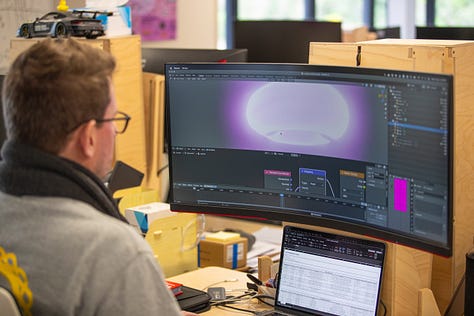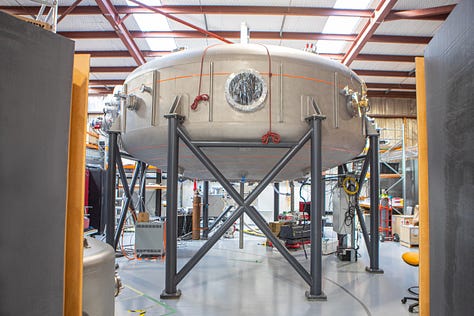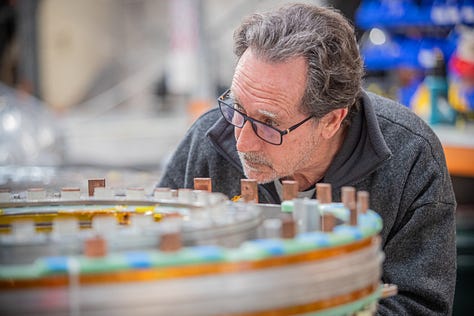Why the Fourth State of Matter Matters
A brief look into why dipoles are fit for fusion.
A handful of the OpenStar team will travel to Atlanta, Georgia, to present at the American Physical Society Division of Plasma Physics (APS DPP) conference.
A key component of proving the viability of dipoles as power plant devices is plasma performance. To briefly understand this in the context of fusion devices, and more specifically, levitated dipoles, read on.
Fusion is the process that powers the stars. Inside our sun, nuclei of hydrogen fuse to become helium, releasing huge amounts of energy. These nuclei are held together by gravitational confinement, something only possible in stars. When recreating this process here on Earth, we must deploy alternative confinement methods, the main ones for fusion being magnetic and inertial confinement.
Here at OpenStar, we use magnetic confinement. This method uses a magnetic field to confine a plasma consisting of fuels upwards of 100 million degrees Celsius. In conventional machines such as tokamaks and stellarators, powerful magnets form a hollow donut shape, and the plasma is confined within. OpenStar’s levitated dipole is the opposite.
In the levitated dipole configuration, the magnet is located in the core of the reactor, and the plasma is confined on the outside of the magnet. This configuration is reminiscent of the dipole magnetospheres seen around planets such as Earth, Jupiter and Uranus. Here on Earth, the magnetosphere helps to protect us from the solar winds ejected from the Sun. When these high-energy particles enter the magnetosphere, they follow Earth’s magnetic field lines and crash into the upper layers of the atmosphere at the north and south poles, forming the aurora borealis and australis.

In 1986, Akira Hasegawa observed Voyager 2’s encounter with Uranus, prompting him to consider dipoles as a viable fusion confinement method. Since this discovery, multiple laboratories around the world have investigated levitated dipoles as plasma confinement devices. OpenStar is currently the only company developing this concept for commercial purposes.
For the levitated dipole, all necessary components, including the superconducting coils that produce the magnetic field, are contained inside the donut-shaped magnet. To further ensure no interruption of the field lines emanating from the magnet, the device must levitate inside a vacuum chamber entirely disconnected from all external power supplies.



A major reason why dipole fields are among the most ideal for plasma confinement comes down to one of the most fundamental principles of physics: entropy. More specifically, entropy as it pertains to a phenomenon called the turbulent pinch. In this occurrence, convective cells drive peaked pressure rather than dispersing them, and as the energy in the plasma increases, so does the entropy. This not only increases the stability of the plasma itself, reducing some of the risks present in other system designs but also gives rise to plasma pressures far above the magnetic pressures being used to confine them, enabling the use of smaller, cheaper magnets to achieve fusion.
OpenStar’s current prototype device is Junior. The purpose of this magnet is to prove the viability of our novel superconducting power supplies housed onboard the floating magnet itself, a world-first application method. While developing this device, our team has also been working on our next machine, Tahi. Tahi is all about plasma performance. Not only will it be the largest levitated dipole device in the world but aims to prove that this production method of fusion energy is scalable to power plants.


